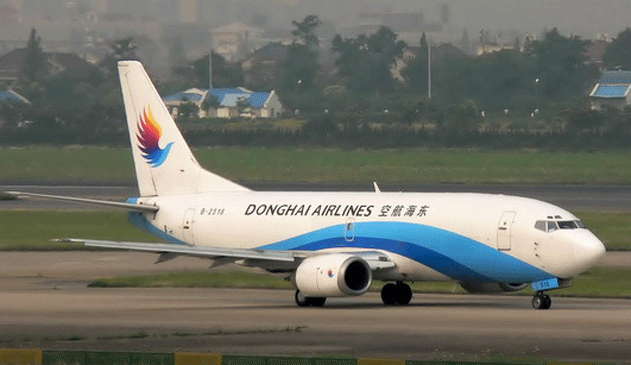
Third In A Series
Here we continue our exclusive wider view
of the world we operate in and what that means to air cargo.
In case you missed the first installment of the
series—just
click here. For the second installment, just
click here.
Gordon Feller, who’s been watching and worrying
about Asian cargo in particular and industry developments in general for
more than 25 years, has created this MegaTrends series exclusively for
Air Cargo News FlyingTypers.
Gordon did his formal academic training at Columbia
University in New York City, where he was a Wallach Fellow and a Lehman
Fellow, and completed graduate work in international affairs.
But as he likes to say—his real-world training
has come from the "school of hard knocks. "
Gordon Feller has written analysis and commentary
for the FT of London, Reuters, Thomson, Informa, Journal of Commerce,
McGraw Hill—and many others.
We welcome your comments and suggestions.
Geoffrey
Overhaul And Globalization
Of The Regulatory Environment
The global financial crisis
has proven beyond a doubt the need for more robust, globally consistent
regulation. Out-dated banking regulation, overlapping regulatory agencies
in the US, and limited international regulatory coordination were already
causes for concern. Combined with insufficient (or non-existent) regulation
of significant financial markets (the credit default swap market was worth
US$60 trillion at its peak, and hedge funds managed US$2.25 trillion —
before leverage) these created an environment ripe for a crisis. An overhaul
of the existing regulatory setup appears an inevitable response.
Finding the right model will be a significant
challenge: regulation needs to block irresponsible or fraudulent behavior
and excessive risk without also blocking growth. It needs to be global
enough to provide a consistent framework, while also meeting local and
national requirements. It needs to be clear and transparent, and able
to act as an early warning system. It also needs to be nimble enough to
make provision for the fast-evolving financial landscape and its complex
products and transactions.
More than anything else, the crisis has
demonstrated to the world how interdependent companies, capital markets
and nations are now and how insufficient national regulatory frameworks
are to deal with this new world. While there appears to be a short-term
trend toward nationalistic government responses and protectionism, markets
and financial institutions are fundamentally too global and interlinked
to unravel and localize. A global problem needs a global solution.
Regulators around the world were already
reconsidering their regulatory frameworks (with the change in administration
likely to act as another — pro-regulatory — catalyst for reform
in the US). They were developing closer ties with one another as evidenced
by a number of cooperation initiatives across the regulatory landscape:
the International Organization of Securities Commissions (IOSCO) stepping
up its efforts to harmonize securities regulation globally; the OECD Forum
for Tax Administration (FTA) sharing cross-border information to counter
tax non-compliance; the International Forum of Independent Audit Regulators
(IFIAR) promoting collaboration in audit regulatory activity; and the
International Competition Network (ICN) aiming to facilitate antitrust
enforcement convergence. International coordination is likely to increase.
The role of the IMF and the World Bank is being challenged — and
likely strengthened — in the aftermath of the crisis. In addition,
regulators are focusing on reducing systemic risks, putting in place a
stronger early-warning system and creating new regulation around companies
and instruments that are not currently regulated, such as derivatives,
hedge funds, mortgage brokers and credit rating.
The continuing convergence of regulatory
frameworks and standards is likely to be an important aspect of the regulatory
overhaul. It holds the promise of increased comparability and transparency
of financial information and greater investor confidence, as well as reduced
compliance costs for global companies. While broadly there is a global
commitment to regulatory convergence in the financial world, challenges
exist as pressures to protect national interests come in to play. This
was recently illustrated by the political interference in fair value accounting
and pressure on the international and national accounting standard-setting
process. Some countries may not be able to resist the temptation to tailor
the standards to their national needs, undermining their consistency and
value. Other countries may seek to create regulatory arbitrage opportunities
in order to attract capital and create competitive advantage.
Accounting standards are at the forefront
of global convergence: over 100 countries require, permit or base their
standards on IFRS and many more have set a date for adoption (e.g., Korea,
India, Mexico, Brazil and Canada). There has also been progress toward
IFRS in the US, although this may lose some momentum in the short term
as the regulatory community focuses on the aftermath of the financial
crisis. Auditing standards convergence is slowly building pace. More aligned
rules for the financial services sector are surely on their way.
This pro-regulatory environment is spreading
beyond the world of finance. As governments around the world take stakes
in companies to safeguard them and lend directly to businesses to address
the liquidity crunch, questions around governance (including executive
pay) are likely to be asked in every sector.
State ownership of financial institutions
raises particularly big questions: despite their hands-off intentions,
governments will face pressure to intervene to ensure these companies
lend widely, stall on debt collection and foreclosures, and retain jobs.
Businesses are seeing financial institutions
(meant to be the most astute at managing risk) fail and are becoming increasingly
concerned about the risk issues that might arise in their own industry.
Risk management is coming back as a top concern of most audit committees
around the world. Some expect that regulation around internal controls
will expand from financial reporting controls to cover the controls of
key business processes linked to significant business drivers and strategic
risks.
Gordon Feller
|




